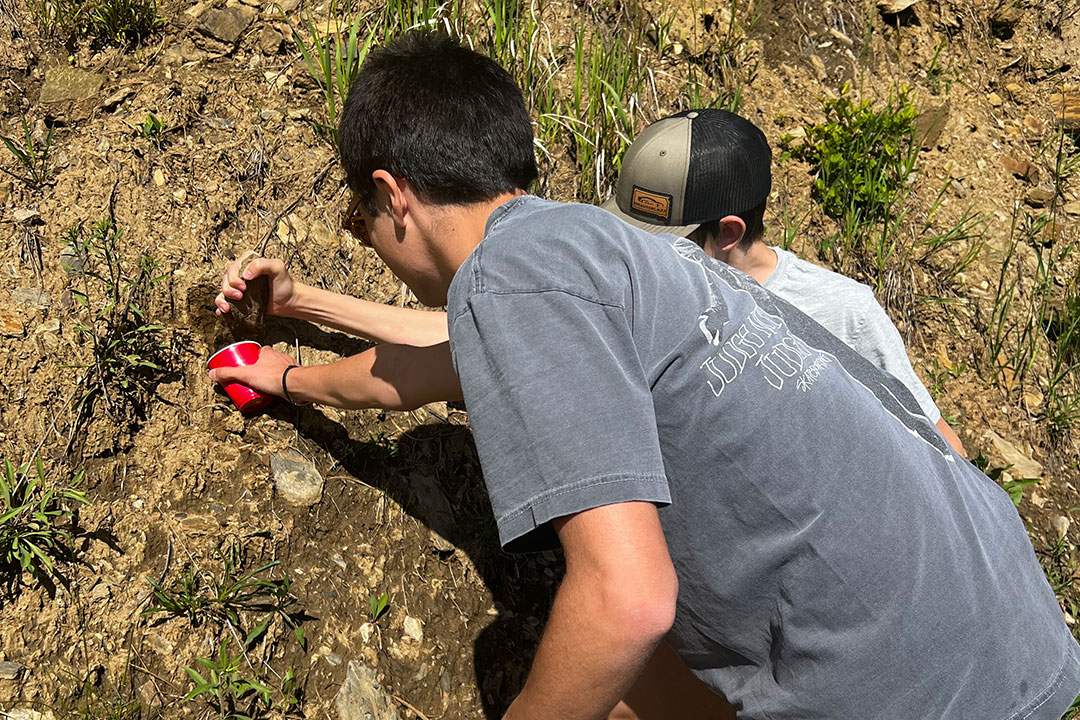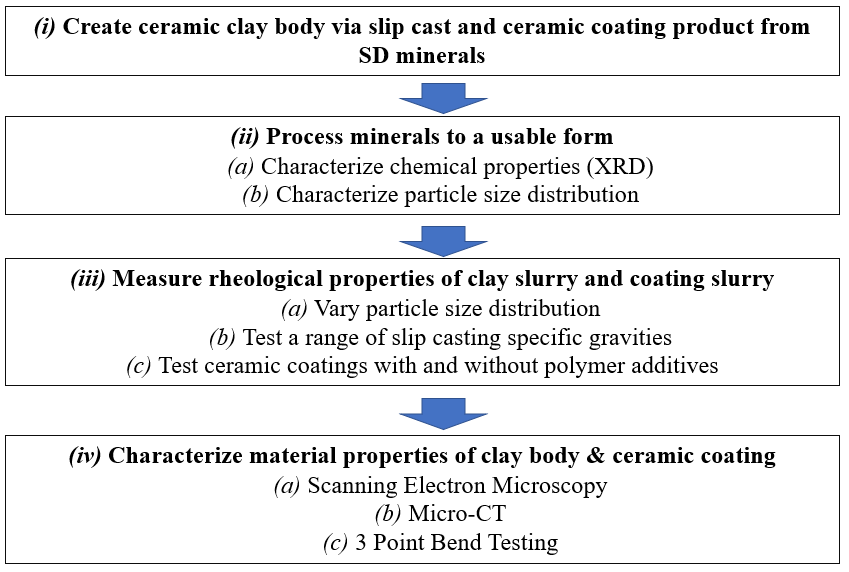RIT’s K-12 University Center linked to college in South Dakota through its relationship with the U.S. Army
K-12 center administers Army Educational Outreach Program Apprenticeships and Fellowships that provide STEM experiences for students at Army sites and partner universities, including South Dakota Mines
Kat Donovan
Ian Grinager and Aaron Letner, two high school students participating in an AEOP apprenticeship at South Dakota Mines, are working in the field to collect samples from the Black Hills.
South Dakota Mines, a university in Rapid City, South Dakota, is 1,506 miles from Rochester Institute of Technology. Where the two are connected, however, is with its partnership through Army Educational Outreach Program Apprenticeships and Fellowships.
RIT’s K-12 University Center administers the program on behalf of the U.S. Army with sites across the country at Army laboratories and partner universities. South Dakota Mines – sometimes just called “Mines” – is one of those collaborators that brings real world STEM experiences to students seeking to enhance their knowledge in science, technology, engineering and math that complements the things they’re most passionate about. These opportunities often lead participants to scholarships through the Department of Defense, furthering education in fields benefited by the DOD and civilian defense jobs that have the ability to change the world.
This year, there are 425 apprentices and fellows, which include two high school students at Mines. Aaron Letner is working on slip casting of local minerals into ceramic bodies – or pottery; Ian Grinager is working on formulating and optimizing ceramic coatings – or glazes – the ceramic bodies that Letner creates.
“I am excited to have had the opportunity the past two years to have worked with high school students in a research setting,” said Kat Donovan, who runs the program at South Dakota Mines and is also a lecturer at the university in materials and metallurgical engineering. “I am especially excited by how well (they) have worked together during this AEOP program. Although, they are working on different projects, they are both willing to help out the other when needed. They both have so much potential and I look forward to seeing them grow as they complete their high school studies.”
Flowchart of the student projects at South Dakota Mines. This project is funded by a grant through the National Science Foundation: Investigating the Impact of Arts on Student Learning by Introducing Glass Science in the Materials Engineering Curriculum
Donovan and her group also have the opportunity this summer to partake in AEOP Apprenticeships and Fellowships speaker series to highlight their work of mineral processing in the Black Hills, a mountain range in South Dakota and Wyoming. It will also include background on the history of the Black Hills and the geology of the region.
“The Black Hills is a very geologically rich region from the northern part of the hills composed of limestone to the granite that appears near Mount Rushmore,” Donovan said. “The region may be known for the gold rush, Sturgis Rally and the infamous Deadwood, but the region has many mineral resources.”
Of note, she added, is an industrial company they worked with, Pacer Minerals – a leading manufacturer of premium muscovite mica and the only remaining potassium feldspar manufacturer in the country. The potassium (potash) feldspar, often referred to as “Custer Feldspar,” is used to make dishware, float glass, bricks, glazes and more.
The goal of the speaker series this year is to inform, educate and inspire the next generation of the STEM workforce with topics to feature various disciplines, Army and/or DOD areas of interest, career pathways and more. To see past webinars, visit this link: AEOP Apprenticeships and Fellowships - YouTube
Donovan’s journey in education began on a ranch in rural South Dakota with seven siblings. Her parents taught her STEM topics through what she called “a unique perspective.” It’s one she still finds a passion in sharing, not only with her own children, but with those she also works with daily.
“My father taught me math by looking at the crops in field and discussing crop yield in relation to market value once sold and water flow through the irrigation system,” she said. “My mom taught science – she was an avid gardener and discussed good soil versus sand, and the value of fertilizer – cow manure. This was especially important as we lived on the edge of the Sand Hills of Nebraska.”
After high school, she completed a bachelor’s degree in chemistry from South Dakota Mines and then headed to Corvallis, Oregon to purse a Ph.D. from Oregon State University, where she also worked at HP Inc. in the 3-D printing sector. Upon completion of her doctoral degree, Donovan moved back to South Dakota, co-founded a consulting company called Dragon Materials, LLC, and accepted a faculty position at Mines.
AEOP has offered apprenticeships at the university since 2012.
Not long before the COVID-19 pandemic, the K-12 center became the leading organization to administer apprenticeships for AEOP, thanks to a $14 million grant and a vision from Donna Burnette, executive director of RIT K-12. The five-year endowment was through the Army Materiel Command and administered by Battelle Memorial Institute. A year later, additional funding through the DOD’s National Defense Education Program was secured to create the fellowship program that expanded opportunities to graduate and postdoctoral individuals.
AEOP Apprenticeships and Fellowships provide Army-funded opportunities for high school through postdoctoral individuals to work in paid experiences at labs across the country, with renowned scientists and engineers in STEM fields that complement their interests and areas of study. There is no commitment to join the military, and highlights the importance of civilian employees to the Department of Defense, working alongside their uniformed counterparts to benefit the country in innovation and research.






